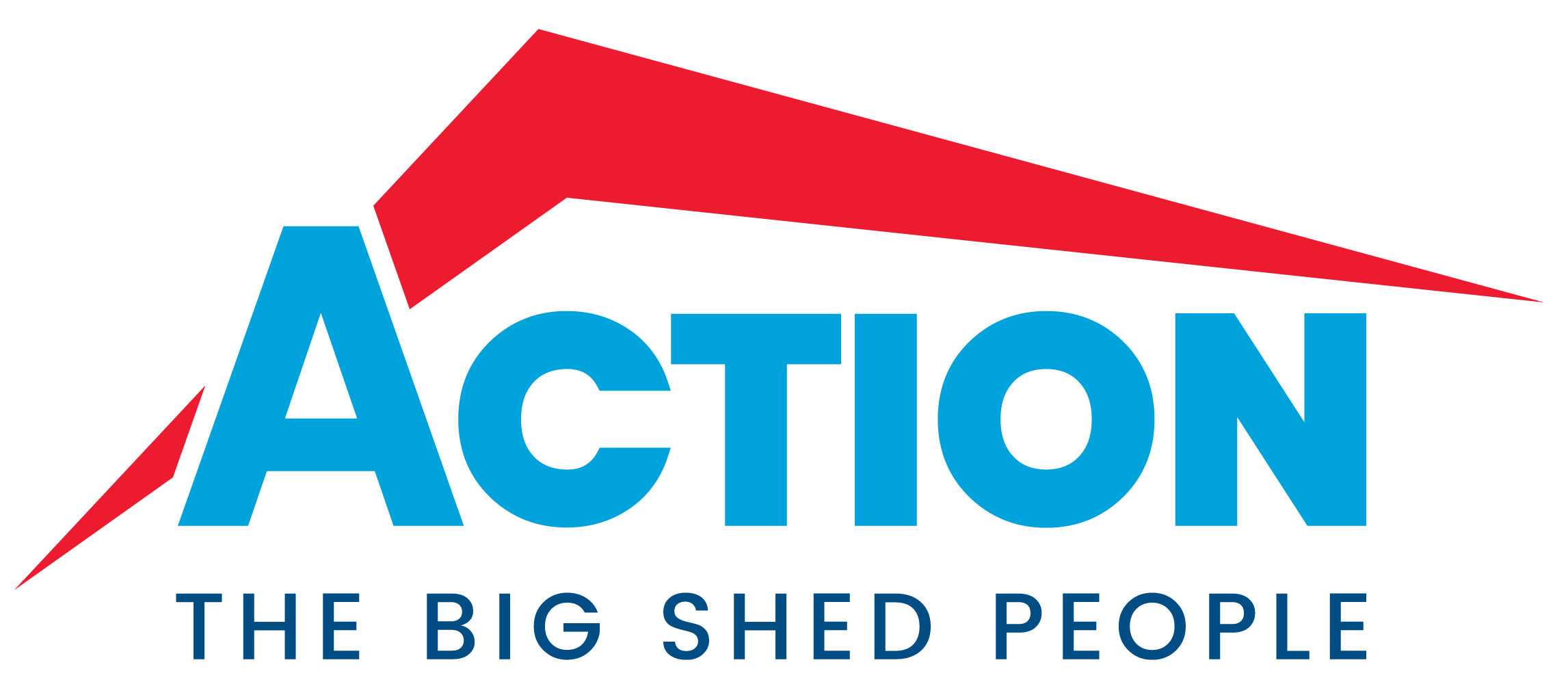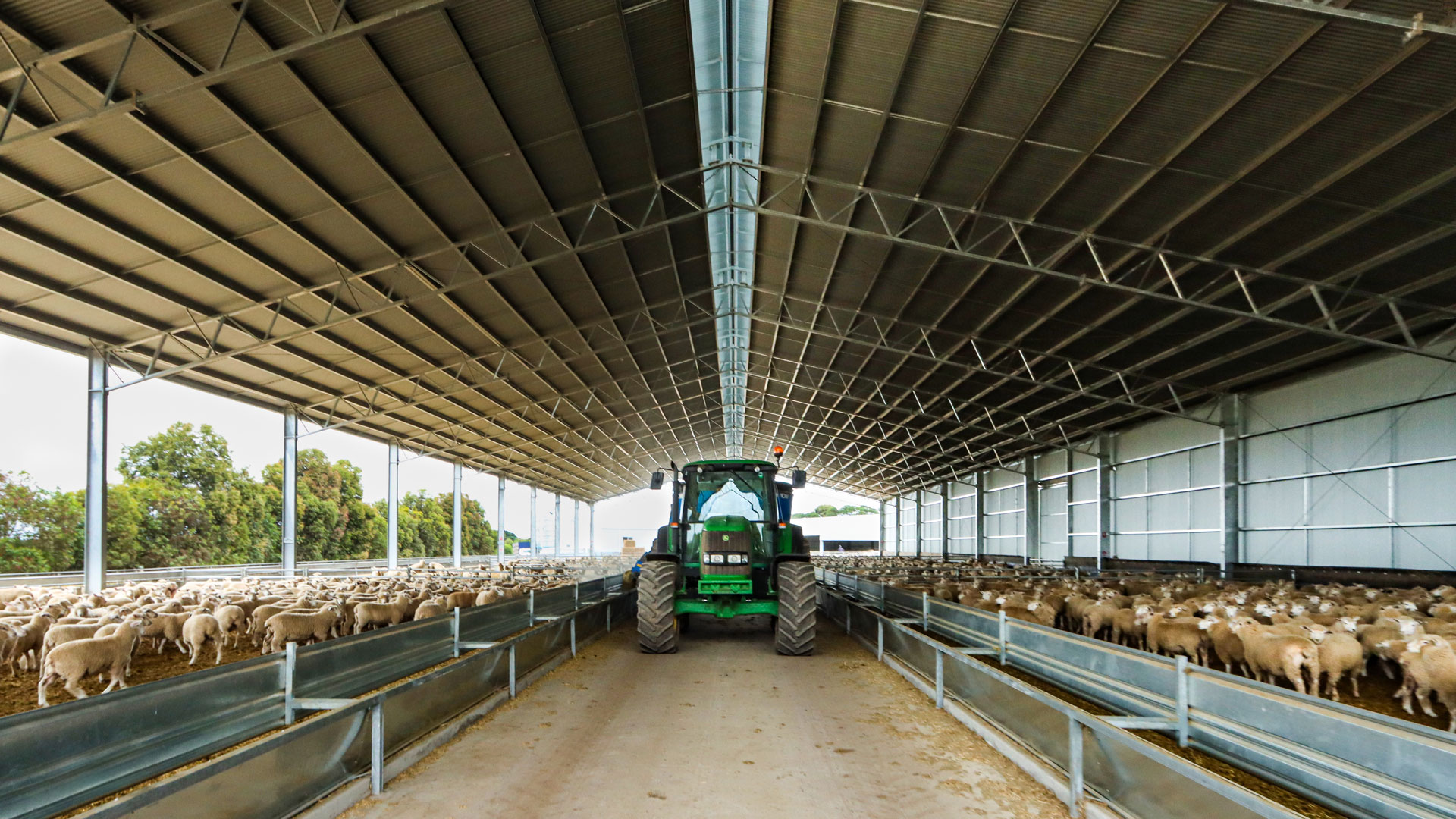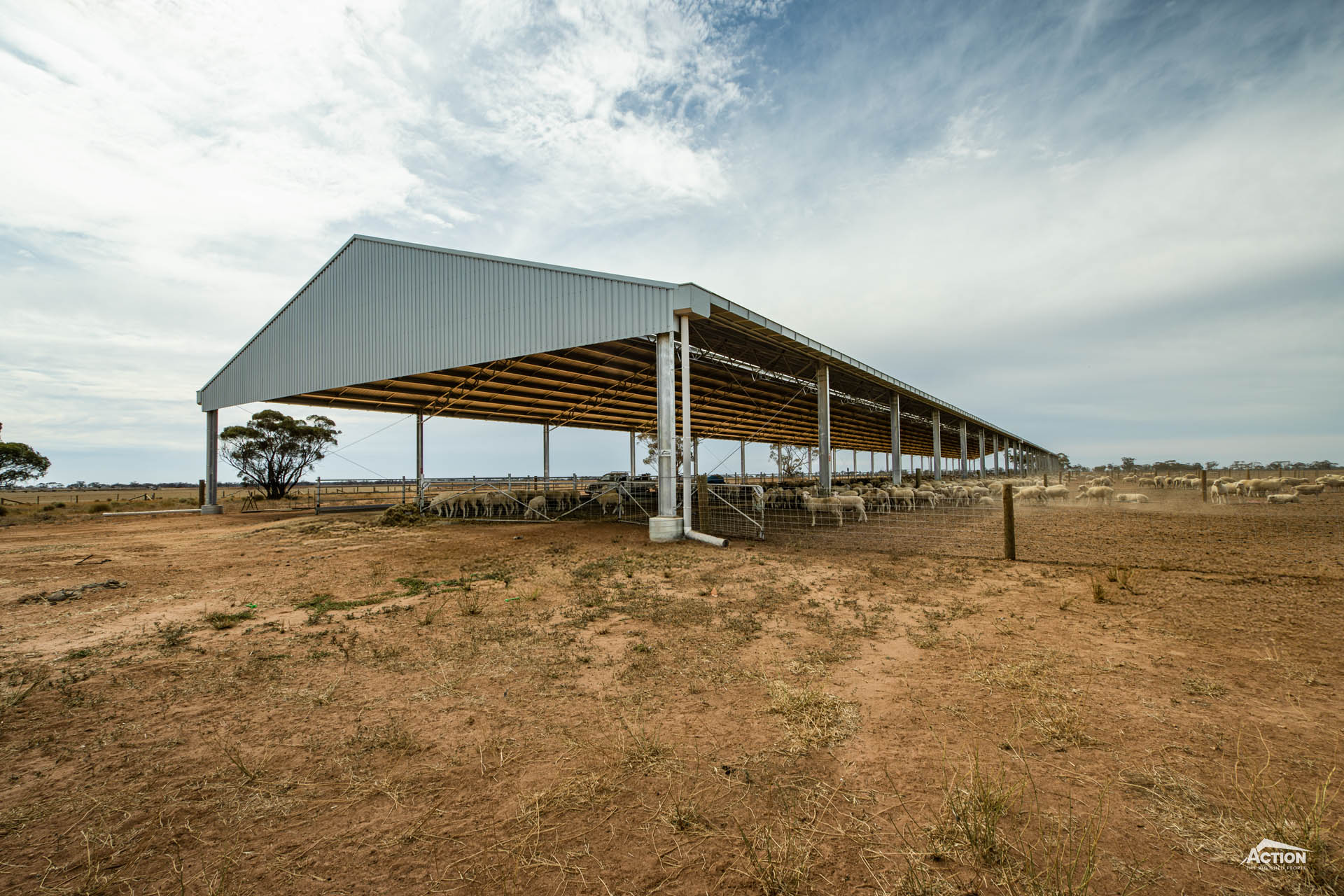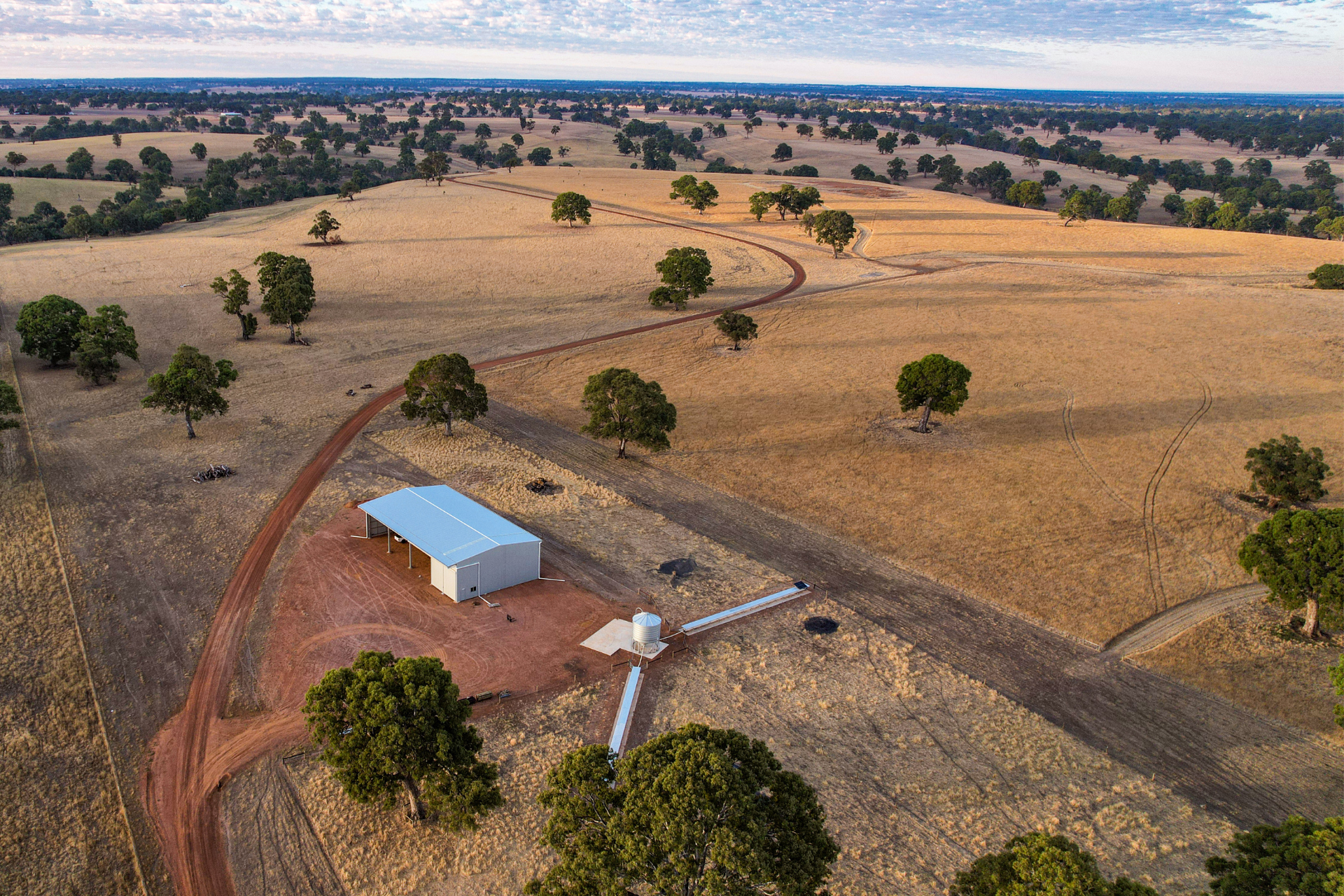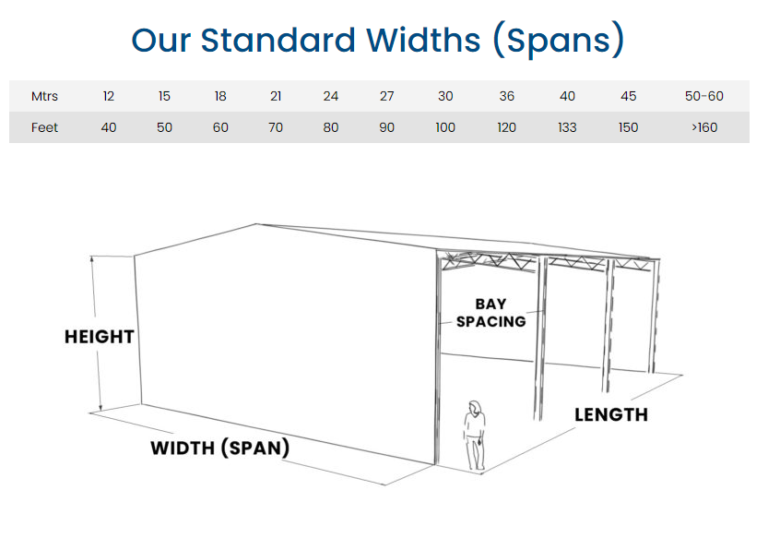What are your sheep feeder options? What is best practice? What works best with a lamb feedlot shed?
Containment feeding has been a popular drought management strategy in recent years, and many producers have transitioned to permanent lamb feedlot setups to continue benefiting from the infrastructure.
There are many considerations when it comes to setting up lamb feedlots, and one of these is the feeder type.
The right feed system can reduce wastage, improve animal health and growth rates, and streamline management.
The wrong system will likely prove the opposite, such as being labour-intensive, negatively impacting animal health and delivering poor return on investment.
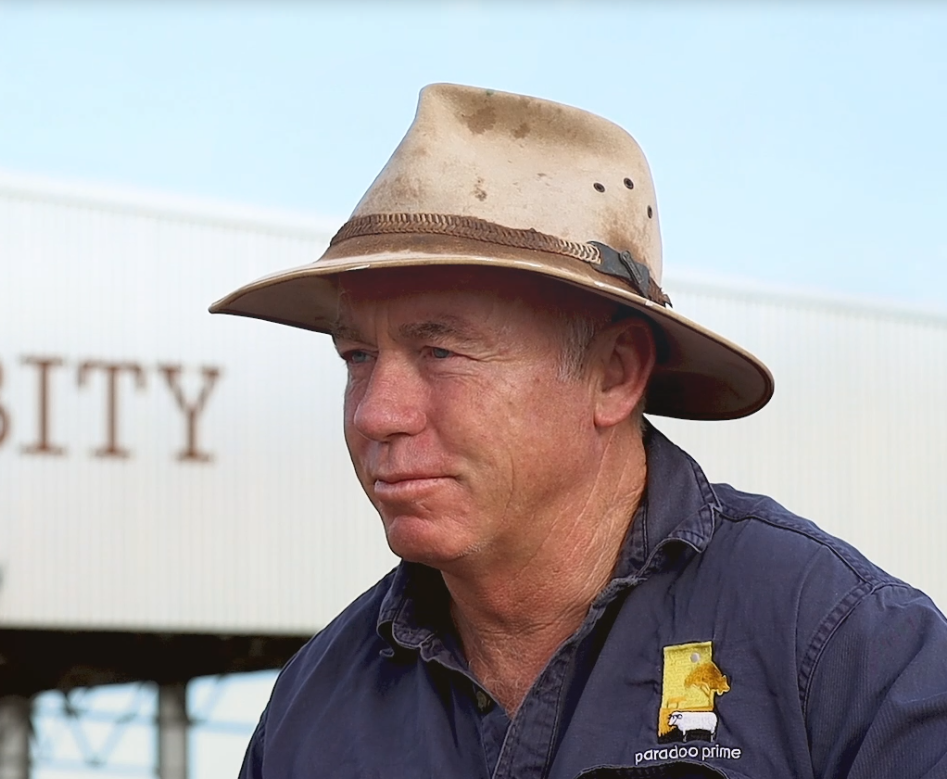
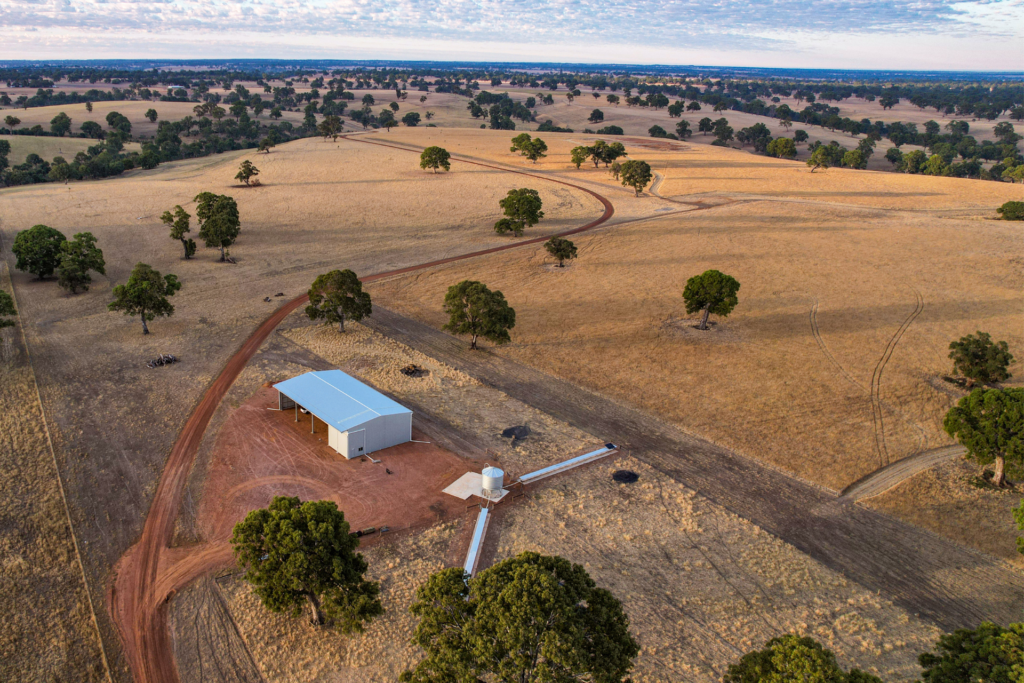
So, what is the right system for your feedlot?
Are self-feeders the best? Can automated systems be cost-effective? What are the benefits of feed bunks?
In this article, we discuss your sheep feeder options, what to consider when choosing a system, and provide a list of Australian suppliers to kickstart your planning.
We hope you find the information useful, and it helps you determine which sheep feeder is best for your operation.
Top Lamb Feedlot Questions – Answered
Quick answers to frequently asked questions about sheep feeders and feedlot sheds.
No. Action – The Big Shed People specialises in designing, manufacturing and installing lamb feedlot sheds – also known as feedlot covers.
We design the shed to work with the chosen feed system and also consider:
- Orientation
- Airflow and weather protection
- Access points
- Bunk space, stocking density, and loafing areas.
You can find sheep feeder supplier options further on in this article.
The three main sheep feeder options for feedlot setups are:
- Lick Feeders such as those by Bromar and Paton. A type of self-feeder that controls the amount of feed a lamb can consume at a time by adjusting the flow of feed and restricting access.
- Auto Feeders set-ups, such as those by Advantage Feeders and Feedtech. These usually operate with a silo at one end, where an auger pushes the grain through to the feeders, keeping them topped with grain and controlling the feed
- Feed Bunks such as those by Conron. A traditional concrete feed bunk and are typically used with a centre or side/perimeter feed lane.
Each sheep feeder system has its advantages and disadvantages.
The best system for your lamb feedlot will depend on:
- Your budget
- How long the sheep will be in the feedlot for
- Operational priorities such as labour efficiency and easy management
- Whether it is a permanent or temporary set up
- Your existing infrastructure
For example, lick feeders offer a lower initial cost but may be more labour intensive and provide inconsistent feed delivery. They are popular choices for smaller scale set ups or short-term feeding.
Automated feeders come with a higher initial investment in technology and equipment but are more labour efficient and can deliver pre-set rations, providing more control over feed intake. They are a popular option for larger sheep numbers and finishing programs.
The traditional concrete feed bunks are a straightforward set up that works well with a TMR. Feed bunks do need to be filled several times a day, and there can be competition for bunk space. Feed bunks work well for finishing acclimatised sheep and are a popular choice for lamb feedlot sheds, with either a perimeter or centre feed lane for low stress feeding.
Covering your feedlot can be a good option for intensive feeding systems.
Benefits include:
- Faster finishing
- Consistent weight gain
- Easier management
- Lowering incidences of feedlot diseases
- Capturing stormwater run off
- Reducing feed wastage
It will also depend on your operation and what you are looking to achieve?
For example, is this a short-term or long-term venture?
Will increasing weight gains and maintaining consistent production open more market opportunities?
The average cost of a lamb feedlot shed is around $750,000, with prices ranging from $250,000 to $1,400,000.
The lamb feedlot shed cost for your project will depend on factors like size, location and design features included.
Generally, a lamb feedlot shed costs around $115 – $150/m² including GST, which works out to be around $150 – $160/head.
The cost per head for your project will depend on factors like stocking rate, loafing areas, and shed configuration.
The best size for your lamb feedlot shed will depend on factors like:
- How many sheep do you want to house? What is the stocking rate?
- What type of feeder/system are you implementing?
- Will there be a feed lane? Centre or side?
- Will the feedlot be 100% contained or include external pens?
- Are you covering new or existing pens?
- What are your access requirements?
- Do you have plans to expand the feedlot in the future?
However, there are also some industry recommendations and best-practice rules of thumb to consider:
- A stocking rate of around 1m² is common for covered lamb feedlots, including for partial shade set ups.
- Lambs will require 150mm or more per head of bunk space, or if you are using lick feeders, this reduces to around 50mm.
- An eave height of 5 metres is most common for a covered lamb feedlot. This provides adequate clearance for equipment such as tractors and feed wagons, and also helps facilitate effective airflow through the cover.
- Several standard spans work well for lamb feedlot sheds, including 24 metres, 27 metres and 30 metres.
- A cantilevered canopy is a cost-effective way to gain extra coverage/width and can be used over side feed lanes.
- The recommended roof pitch for a lamb feedlot is around 18 degrees. This works most effectively with a 1500mm ridge opening.
- Cost-effective and functional bay spacings range from 8 metres to 10 metres. The 10-metre option is common for larger setups for airflow and access (especially if the footings have been formed up).
We take a deep dive into the topic here – What Size Lamb Feedlot Cover Do I Need?
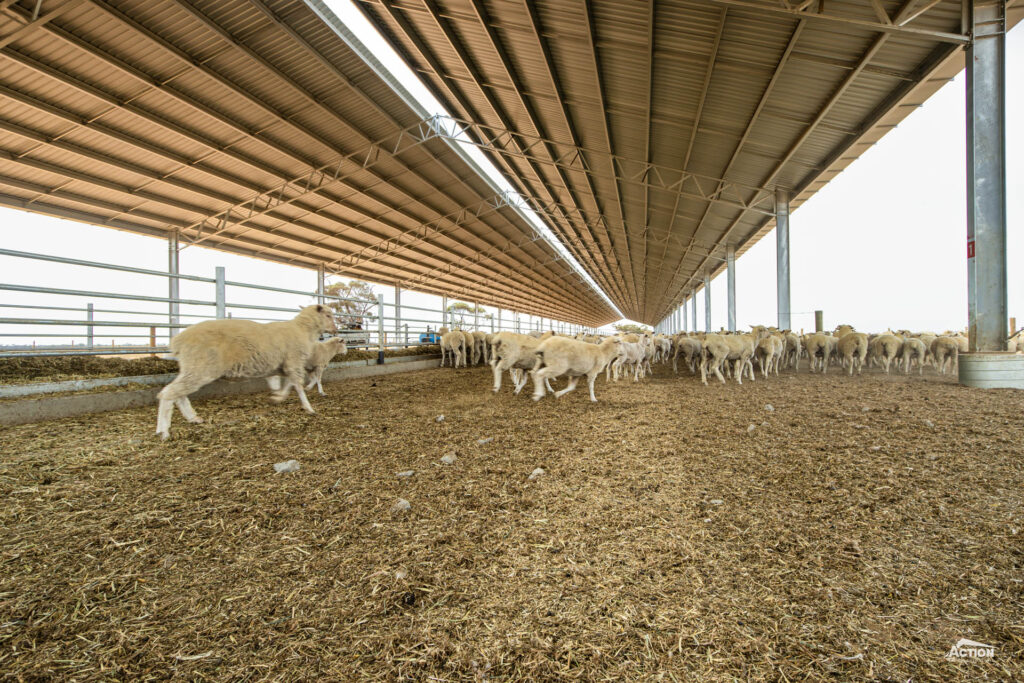
10 Sheep Feeder Suppliers – Ratings & Reviews (A-Z)
Whether you’re committing to a new sheep feedlot set-up or expanding an existing one, new sheep feeders are an important investment. And it pays to get it right!
So, to help you with your research, we’ve rounded up ratings and reviews for 10 Australian sheep feeder suppliers.
We have included suppliers for lick feeders, auto feeders and feed bunks.
Please note, Action Steel is not affiliated with these suppliers; they are suggestions only and are listed in alphabetical order.
First up, Advantage Feeders.
A
Advantage Feeders
Advantage Feeders’ product range includes grain feeders with the innovative 3-way saliva restriction system developed by founder Gerard Roney.
In recent years, Advantage Feeders have launched an automated feedlot system.
The system allows you to use your grain feeders in the paddock and then integrate them into a feedlot setup.
B
BOYD Metal Works
Based in Cowra NSW, Boyd’s offers a wide range of feeder options – which you can view here – and also designs and constructs automated sheep feedlots.
Lambs in Peter and Ann-Maree Boyd’s own feedlot “routinely achieve daily growth rates of 0.35 to 0.45 kg/day, allowing them to be turned off at a minimum liveweight of 65 kg in just 60 days.”
B
Bromar Engineering
With a 4.7-star Google Reviews rating, Bromar tout their sheep feeder range as “the simplest on the market” – thanks to 3-way restriction feeding, having one easy adjustment and being “lamb friendly.”
The Bromar range also includes loose lickfeeders and multifeeders.
B
Brookfield Agriculture
According to their website, the BROOKFIELD StockFeeder offers “the largest feeding area on the market”, and several features allow it to be adapted for various feeding programs – including feedlots.
- Easily transported (including when full)
- Double the capacity of a standard lick feeder
- Full opening lids
C
Commander Agriculture
Based in Albany WA, Commander Agriculture sheep feeder options include grain feeders with adjustable lick doors. These are available in either 2.75m³ or 4.12m³ capacity.
With a broad range of products, you will also find Commander featured here –
C
Conron Stockcrete
Conron (now part of Civilcast) has 100% recommend rating on Facebook and offers a wide range of pre-cast concrete products for on-farm use – including open feed bunks for sheep.
These feed bunks are easy to fill and easy to join together for continuous troughing in your feedlot.
F
Feedtech Feeding Systems
F is for … Feedtech! And, Feedtech specialise in auto feeders, including static auto feeders and mobile auto feeders.
The Feedtech website provides a lot of handy information on head spacings and other setup recommendations, such as concrete slabs.
You will also find several testimonials and reviews – such as the one from Scott Langley below.
L
Lienert Engineering
Owned and managed by Matthew and Meagan Lienert, Lienert Engineering manufactures and supplies mobile and stationary grain feeders.
The feeders include features designed specifically by Matt from his own experience, intended to make feeding easy and effective.
P
Paton Industries
The Paton feeder range includes:
And there is a handy gallery of explainer videos and examples on the website, to help you understand whether they will be a good fit for your lamb feedlot.
T
Telfer Rural
Based in Tamworth NSW, Telfer Rural is a family-owned business that designs and manufactures a broad range of products.
You can learn about Telfer sheep feeders and lamb feedlot troughs here.
T
The Shepherd Ag
Last on this list, but certainly not least, is Shepherd Auto Feeders!
Options for Shepherd Auto Feeders include:
- Remote monitoring and mobile app
- Weighing systems
- Solar upgrade
View the range of products here.
And if you’re looking for inspiration, be sure to check out The Shepherd Ag Facebook page to see their latest projects.
So, that’s a wrap on sheep feeder options and suppliers!
What did we miss? Have a supplier recommendation we should include? Let us know on 1800 687 888!
